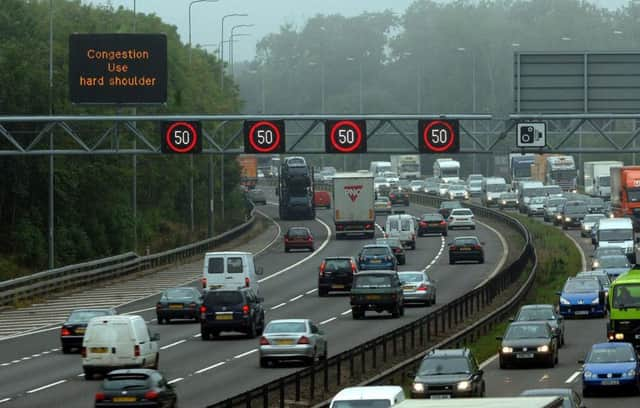Is it time for double-decker motorways to combat congestion?


The number of cars on the UK’s motorways increased by 1.9% between 2013 and 2014. It’s expected there will be a similar rise in the same period from 2014 to 2015, which means more than 65 million motorway miles driven in each of these periods.
When the UK’s motorways are under such pressure and expanding the roads network is such a contentious issue, should we be looking for alternatives to widening these roads? In the house building industry, it’s long been a problem finding new land to build on, especially in heavily populated areas. The solution here has been to build up, with the ultimate expression of this philosophy being the skyscraper.
Advertisement
Hide AdAdvertisement
Hide AdRoad builders could learn a thing from this way of thinking. If the UK were to adopt “double-decker” motorways, we could double the amount of road space with very little impact on the surrounding countryside. There would be no need to widen existing roads other than at junctions to create a little more space for slip roads on and off the motorway.
Motorways already have a central reservation that would be ideal for positioning the main spine of a support for the upper deck. In the same way some bridges run with traffic on one level and trains on another, we could adapt this design to allow for a two-tier motorway system.
Such a motorway exists already in the UK on a small section of the A167 (M) in Newcastle, so the idea is not such a barmy one and nor is it something that hasn’t been tried before. As a result, the technology already exists, it’s only the political will that’s lacking.
If politicians need another prompt, double-decker motorways could also greatly help reduce road traffic collisions. They could separate out different streams of traffic, placing heavy goods vehicles on the lower deck away from cars.
The consequence of this is much less disparity in the relative speeds of vehicles using the same section of motorway. It would also mean car drivers being less frustrated at slower moving vehicles, which is an important consideration when frustration often leads to poor judgment by drivers.
While not every stretch of motorway would be suited to a double-decker design or require this kind of radical solution to traffic flow, there are swathes of the UK’s motorway network that could be improved with such a scheme.
Even in the event of a collision or incident that slows one section of a double-decker motorway, traffic could be redirected onto the other level at the preceding junction to maintain traffic flow. This would reduce the effects and delays of such serious incidents and it could also mean the emergency services being able to reach a collision site more quickly.
Given that motorways are far from the most scenic constructions in the UK, adding a second deck to the most heavily congested is not going to spoil any vistas. Nor would it steal any more land from farmers and wildlife.
If we want to have freer flowing motorways with less effect on the environment, now is the time to think up rather than out.